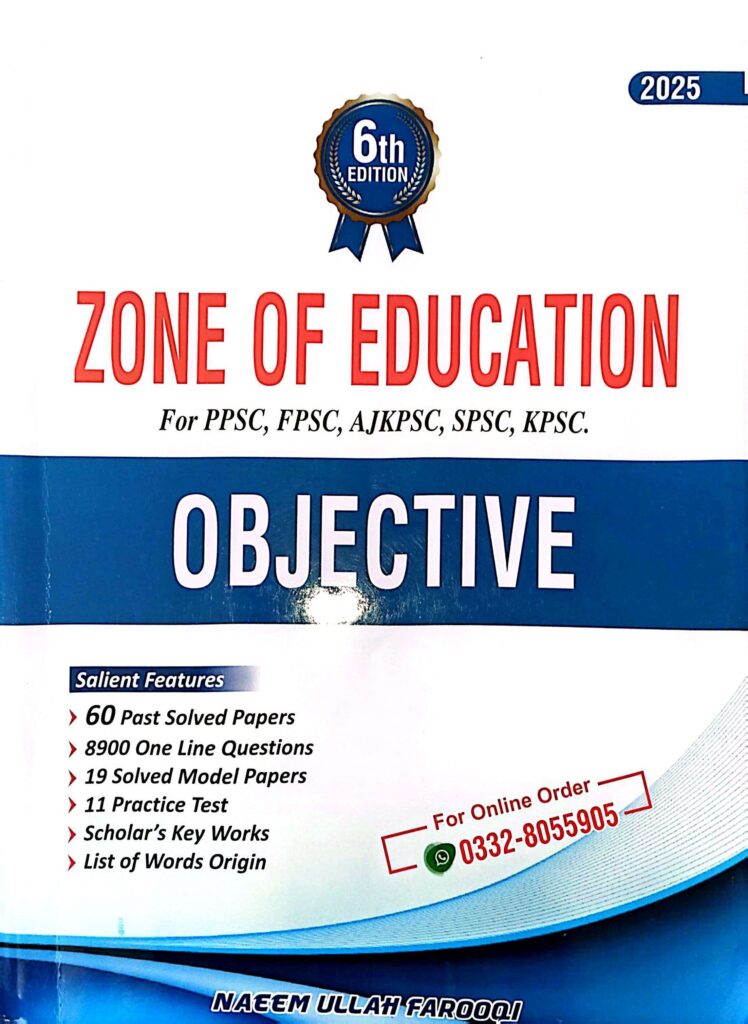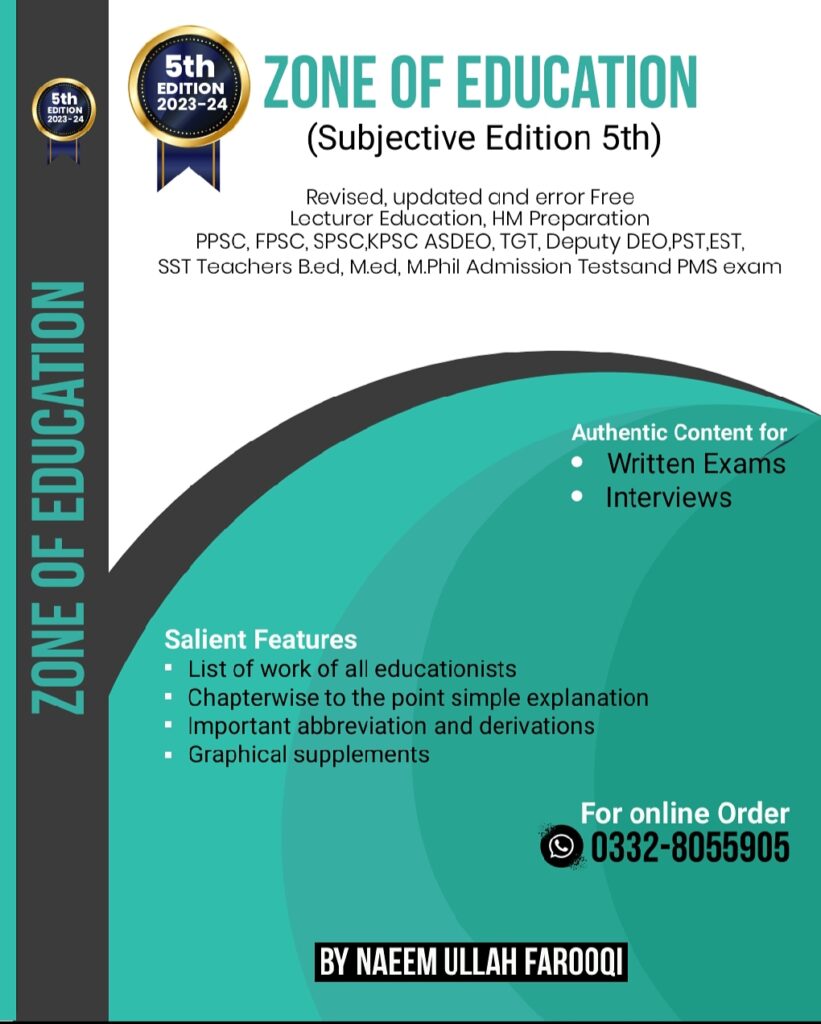Assessment
221. A common set of items administered with each of two or more different forms of a test for the purpose of equating the scores of these forms is called:
A. Performance test
B. Anchor test
C. Aptitude test
D. None of the above
Ans: B. Anchor test
222. The key that describes the scoring scenario for a question or test is:
A. Answer key
B. Sample answers
C. Model answers
D. None of the above
Ans: A. Answer key
223. The process of collecting data and making an appraisal of a person’s ability to focus on the relevant stimuli in a situation is termed as:
A. General-assessment
B. Specific assessment
C. Attention assessment
D. None of the above
Ans: C. Attention assessment
224. A document that contains information about the assessment, including its stakeholders, the intended candidates, eligibility, job analysis, the conditions under which the assessment must be conducted, content domains, and other information to ensure that assessments are valid, equivalent, and unbiased is called:
A. White paper
B. Blue-print
C. Report
D. None of the above
Ans: B. Blue-print
225. Paper forms that contain printed circles and other guide marks to prompt a participant to fill in the form for later scanning by an optical mark reader are called:
A. Computer sheets
B. Marking sheets
C. Bubble sheets
D. None of the above
Ans: C. Bubble sheets
226. CAA stands for:
A. Clean Aptitude Assessment
B. Commercial Arranged Assessment
C. Computer Assisted Assessment
D. None of the above
Ans: C. Computer Assisted Assessment
227. CAT stands for:
A. Computer Adaptive Testing
B. Computer Aptitude Testing
C. Computer Adopted Testing
D. None of the above
Ans: A. Computer Adaptive Testing
228. CBA stands for:
A. Computer Based Assessment
B. Computer Assisted Assessment
C. Computerized Basic Assessment
D. None of the above
Ans: A. Computer Based Assessment
229. The average score for all participants in a class for a particular test is called:
A. Class average
B. Class median
C. Class mean
D. Class interval
Ans: C. Class mean
230. An exercise for which examinees must create their own responses or products rather than choose a response from an enumerated set is:
A. Construct response item
B. Conducive response item
C. Conduct response item
D. None of the above
Ans: A. Construct response item
231. A procedure in which an empirically derived scoring system or set of weights from one sample is applied to a second sample in order to investigate the stability of prediction of the scoring system or weights is termed as:
A. Cross-verification
B. Cross-cutting
C. Cross-validation
D. None of the above
Ans: C. Cross-validation
232. One of more testing centres, usually managed by a delivery provider (i.e., an organization that provides candidate scheduling services, computers, proctoring services, and the space in which to conduct a computerized test) is called:
A. Delivery medium
B. Delivery channel
C. Distribution channel
D. None of the above
Ans: B. Delivery channel
233. A score to which raw scores are converted by numerical transformation (e.g., conversion of raw scores to percentile ranks or standard scores) is called:
A. Basic score
B. Derived score
C. Accumulative score
D. None of the above
Ans: B. Derived score
234. One of the choices that a participant may select that is not the correct answer is:
A. Alternate
B. Option
C. Distracter
D. None of the above
Ans: C. Distracter
235. The statistical property, sometimes known as facility, indicating the level of a question from 0.0 to 1.0, calculated as the average score for the question divided by the maximum achievable score, is called:
A. Variety
B. Difficulty
C. Both A & B
D. None of the above
Ans: B. Difficulty
236. A response style where the participant indicates their selection by using a mouse or pointing device to drag and drop graphic elements that illustrate their choice(s) is:
A. Drag-and-drop question
B. Multiple choice question
C. True and false question
D. None of the above
Ans: A. Drag-and-drop question
237. A response style where the participant enters an essay in response to the stimulus is called:
A. Essay response
B. Short answer response
C. Multiple response
D. None of the above
Ans: A. Essay response
238. A response style where the participant completes a phrase by entering a word, words, or a number is:
A. Multiple choice
B. True false
C. Short answers
D. Fill-in-the-blanks
Ans: D. Fill-in-the-blanks
239. A method of obtaining a score on a test, or a test item, that results from an overall judgment of performance using specified criteria is:
A. Holistic scoring
B. Complete scoring
C. Both A & B
D. None of the above
Ans: A. Holistic scoring
240. A response style where the participant indicates their selection by using a mouse or pointing device on a graphic display is:
A. Immediate response
B. Hotspot response
C. Negative response
D. Positive response
Ans: B. Hotspot response
241. An individual who supervises a written examination/test to maintain a fair and consistent testing environment, but takes no part in the examination process, is called:
A. Invigilator
B. Examiner
C. Evaluator
D. None of the above
Ans: A. Invigilator
242. A general term referring to an individual problem, question, choices, correct answer, scoring scenarios, and outcomes used within a test is:
A. Choice
B. Question
C. Item
D. None of the above
Ans: C. Item
243. The process of studying the responses to questions delivered in the pilot study or prototype in order to select the best questions in terms of facility and discrimination is referred to as:
A. Task analysis
B. Item analysis
C. Question analysis
D. None of the above
Ans: B. Item analysis
244. The system by which test items are maintained, stored, and classified to facilitate item review, item development, and examination assembly is:
A. Question bank
B. Answer bank
C. Item bank
D. None of the above
Ans: C. Item bank
245. The aggregate of items from which a test or test scale’s items are selected during test development, or the total set of items from which a particular test is selected for participants during adaptive testing is called:
A. Item bank
B. Item analysis
C. Item pool
D. None of the above
Ans: C. Item pool
246. A test whose results have only minor or indirect consequences for examinees, programs, or institutions tested is known as:
A. Low-stakes test
B. High-stakes test
C. Performance test
D. Aptitude test
Ans: A. Low-stakes test
247. An instrument that measures two or more constructs which are less than perfectly correlated is called:
A. Bi-factor test
B. Tri-factor test
C. Multi-factor test
D. None of the above
Ans: C. Multi-factor test
248. A test administered to a representative sample of participants solely for the purpose of determining the properties of the test is known as:
A. Early test
B. Primer test
C. Pilot test
D. None of the above
Ans: C. Pilot test
249. A diagnostic assessment before a specific learning activity, used to create intrigue and to set a benchmark for comparison with a post-course test is called:
A. Initial test
B. Pretest
C. Both A & B
D. None of the above
Ans: B. Pretest
250. A pre-test is conducted as a ** to an appropriate learning activity and to provide instructors and mentors information on the student’s abilities:
A. Pre-requisite
B. Route
C. Both A & B
D. None of the above
Ans: C. Both A & B
JOIN ZONE OF EDUCATIONPK!
Discover the most comprehensive and reliable pedagogy resources in Pakistan, curated for competitive exam success. Our content covers all competitive exam MCQs, including PPSC, FPSC, AJKPSC, SPSC, and more. Designed to empower learners with top-notch material and insights, trust us for your preparation journey!


